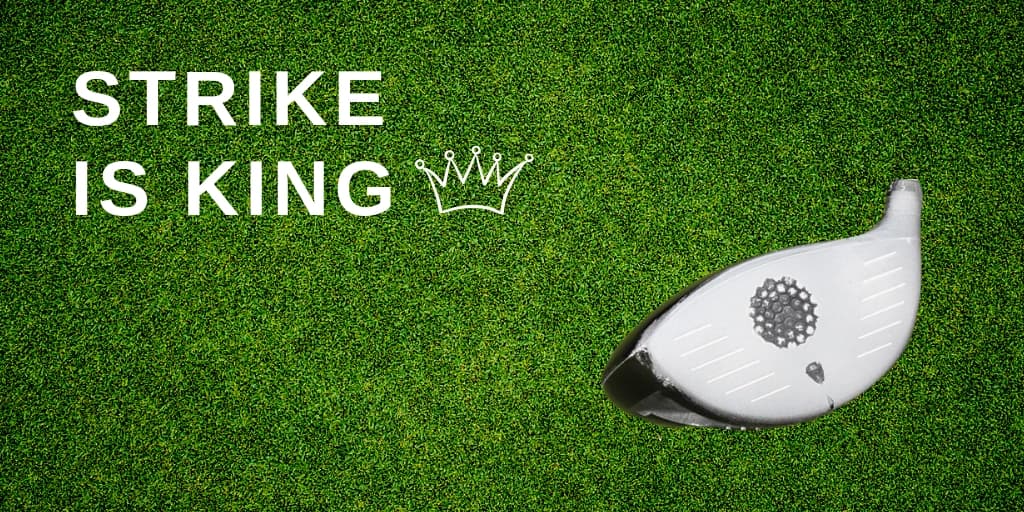
When the instructional world talks about fundamentals in the golf swing, similar themes come up. Topics like posture, grip, alignment (commonly referred to as PGA) get a lot of attention.
The truth is that all of these are variable. There is no one right way to grip a golf club or align your feet at address. The combinations of golf swing tendencies are endless, and what works for your swing might not work for someone else's. However, there is one fundamental that is not negotiable or variable, and I don't think it's talked about enough. I'm speaking about impact location.
Where you strike the ball on the face of the club is perhaps the most essential fundamental to get correct in your swing. It's a skill that needs to be developed over time, and that means paying attention to your current impact tendencies and working on improving them. It's not discussed all that often.
In this article, I'd like to educate you a little more on why impact location is so important, why it makes sense to understand what your tendencies are, and a few ideas on how to practice effectively. It's something I've done since I was a teenage golfer, and I believe it's helped my game tremendously.
Why Impact Location Is So Important
Golf is a game of proximity - we pick a target, make a swing, and hopefully land the ball within a reasonable distance of where we aimed. The closer you are, the better opportunity you have to post a lower score.
Sounds easy, right?
Where you are striking the ball on the face of the club will significantly influence your ability to reach your targets on the course. There's no question that golf club technology has come a long way, and clubs are more forgiving than ever on off-center strikes, but the fact remains that the closer you can strike the ball to the sweet spot (also known as the center of gravity) the more optimal your ball flight will be.
I don't want to get too into the weeds on technical info, but there are several reasons why missing the center of the club face can be so penal on the course.
With woods and hybrids, something called gear effect becomes an issue. Looking at the club horizontally, if you strike the ball closer to the toe (outside) of the club, it will impart a hook spin, and if you make impact closer towards the heel, the ball will tend to slice more.
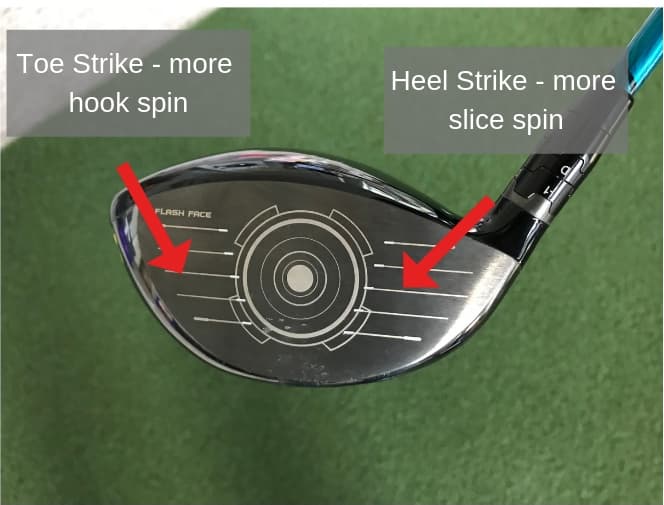
There is a vertical element to gear effect too. The lower you strike the ball on the face of your driver or 3-wood, it will send the ball on a lower trajectory with more spin, which is not a great combination for distance. However, the higher you strike the ball on the face of the driver, it will add loft and decrease spin, which can help you hit drives farther. That's why with your driver, shots that are struck in the middle of the face, or even just above, will usually be your best swings.
For example, take a look at these two swings:
The first one launches at 6.2 degrees (very low), spins at 2606 rpm (high for my swing) and carries 213 yards and 240 total.
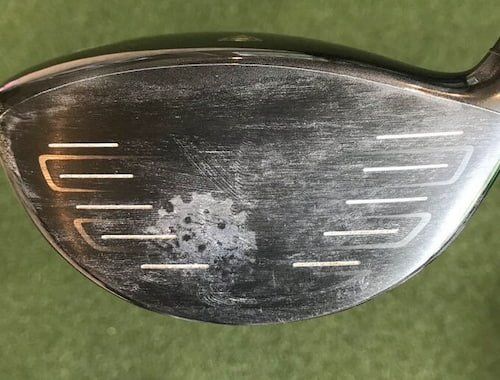
The second swing launches 14.3 degrees, with 1864rpm, with a 250-yard carry and 281 total distance.
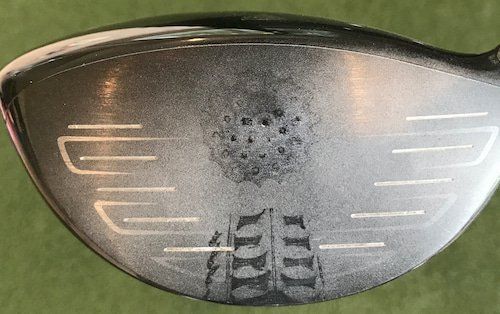
Those are extreme examples, but you can see how missing the center of the clubface robs me of almost 40 yards of distance (and accuracy).
Diagnosing Your Tendencies
The first step in improving your impact location is to understand your current tendencies. Some golfers (like myself) tend to strike it more towards the heel, others more towards the toe. And yes, plenty don't have any pattern and they seem to hit it all over the face.
Either way, most players have no idea where they are striking it on the face, and they should take some time to find out.
There have been several methods that are popular over the years. Some golfers purchase impact stickers, but they don't allow clean contact with the face of the club and can alter your ball flight. I've used dry-eraser pens to mark the back of the golf ball, and it will leave residue on the clubface where you made an impact. However, I've found myself getting lazy and not wanting to keep marking my ball before every shot.
The easiest method I have settled on for irons and woods is using foot odor spray. Years ago some golf instructors realized that it was the perfect material, and I'm sure middle management at several companies probably wondered why they saw their sales spike.
Recently, a company called Strike Spray formulated a compound for the golf market. I've been using it the last several months, and I've found it to be a bit "stickier" and longer lasting on the club face than foot odor sprays.

So if you've never done this kind of practice before, your first order of business is to keep track of where you are striking it on the face with all of the clubs in your bag. For myself, when I'm not swinging well, I drift closer towards the heel of the club and lower on the face with my irons and woods.
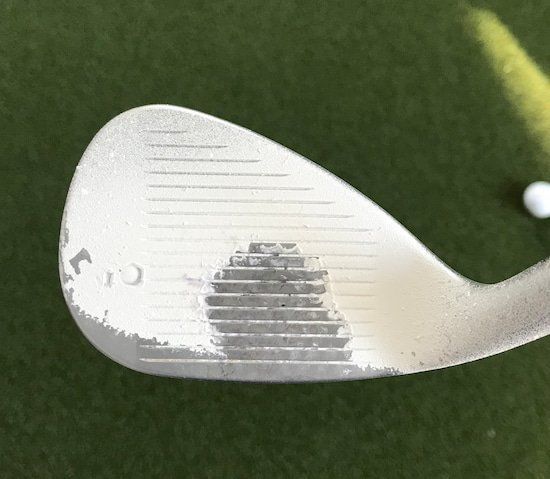
You'll also want to take note of how the shot feels at impact before you take a look at the face. You'll start to learn what specific impact feels like in your hands so that when you're on the course, you'll begin to understand where you are missing your shots on the face (with the goal of self-correcting).
Ideas For Practicing
There are two main reasons I like practicing with impact location intent:
- It gives your practice session more meaning and structure.
- When you focus on impact, it allows your swing to self organize a fix that doesn't require you thinking about all of the moving parts it took to get there.
While I never tell all golfers that it can fix everyone, a lot of players are amazed at how much progress they can make once they figure out their impact tendencies and consciously try to start striking different parts of the face.
If you're noticing a bias towards one side of the face, I like using a "fight fire with fire" approach. For example, when I am struggling with heel strikes, I merely try to exaggerate a miss on the outside of the toe. Sometimes I'll even set up with the ball on that side of the face. Interestingly enough, when I try to strike the toe, it moves my impact from the heel to the center of the face.
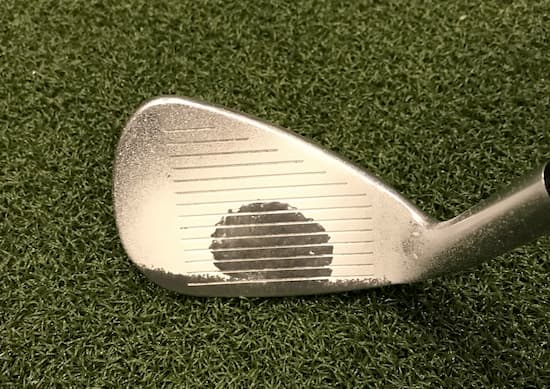
You can also experiment with small changes in your setup to see how it changes your strike location - like standing closer, or further away from the ball.
Another experiment I love to do is altering tee height. Start adjusting your tee in low, medium, and high positions and see how it changes your impact location on the driver's face (or other clubs you use off the tee). Your goal is to try and reduce strike towards the bottom of the clubface, and get them more towards the center, or just above it.
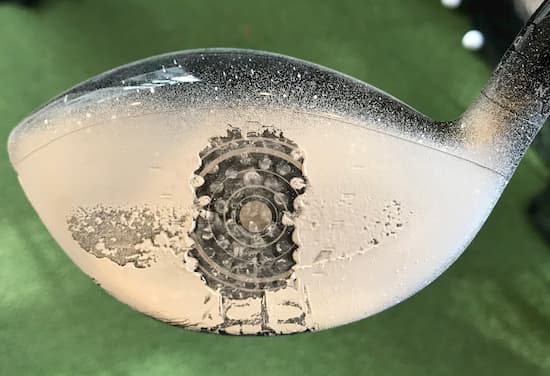
Using physical barriers like tees can help improve your impact location. A good drill is to set two tees slightly wider than the width of your club - try clearing the gates with your practice swings and then while trying to hit a ball. Or you can experiment with a tee on one side of the ball as well, depending on where your misses are.
Lastly, you can challenge yourself to strike different parts of the clubface on purpose. Consciously try to hit the heel, center, and the toe of the club separately. If you're looking for real bonus points, you can try Andrew Rice's drill where you separate the driver face into four quadrants and try to strike each one separately.
You'll Likely Be Surprised
I think you'll be surprised what kind of results you'll see if you try any of these ideas or a mixture of them. Your goal as a golfer is to increase your ability to access the center of the clubface, and when you are struggling with that, find ways to self-correct.
All of you reading this are at different levels of ball striking ability, but as always, my advice is to seek incremental improvement. Even if you succeed at hitting as little as 1-3 shots per round closer to the sweet spot, it could result in a substantial reduction in your scores.
If you're interested in using Strike Spray you can learn more about the product on their website here. I've arranged a 10% discount for Practical Golf readers using code PRACTICALGOLF at checkout.
Strike is king!
We care about the protection of your data Read our Privacy Policy